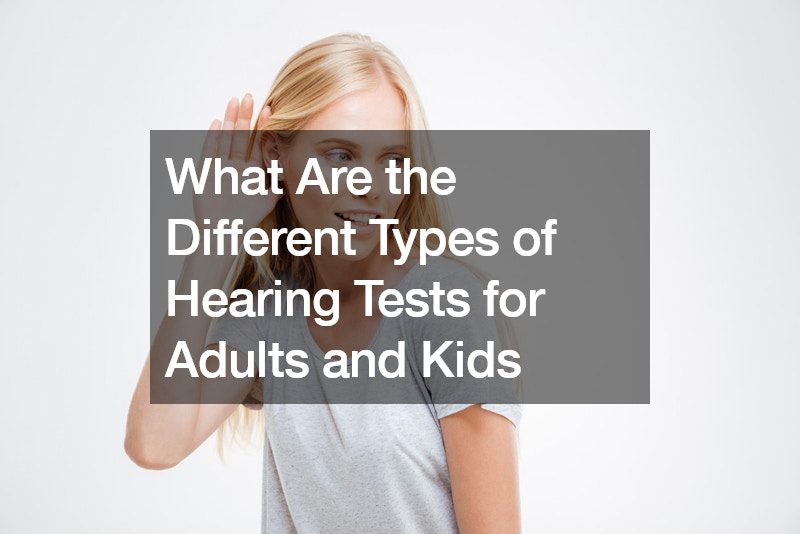Hearing tests are essential tools used to evaluate an individual’s auditory capabilities and detect any hearing impairments. Both adults and children may undergo various types of hearing tests, each designed to assess different aspects of hearing. Here’s an overview of the different types of hearing tests for adults and kids:
Hearing Tests for Adults
Pure Tone Audiometry:
Pure tone audiometry is the most commonly used hearing test for adults. It involves listening to a series of tones at different pitches and volumes through headphones.
The individual signals when they hear a sound, and the results are plotted on an audiogram. This test helps determine the faintest sounds a person can hear at various frequencies, identifying any hearing loss.
Speech Audiometry:
Speech audiometry evaluates an individual’s ability to hear and understand speech. It includes two parts: speech recognition threshold (SRT) and word recognition score (WRS). SRT measures the faintest speech an individual can hear, while WRS assesses the clarity with which speech is understood. This test is particularly useful in diagnosing the type and degree of hearing loss.
Tympanometry:
Tympanometry measures the movement of the eardrum in response to changes in air pressure. It helps assess the middle ear function and detect issues such as fluid buildup, eardrum perforation, or Eustachian tube dysfunction. The test is quick and painless, involving the insertion of a small probe into the ear canal.
Otoacoustic Emissions (OAE):
OAE tests evaluate the function of the outer hair cells in the cochlea. A tiny probe placed in the ear canal emits sounds and measures the echo response from the inner ear. This test is useful in detecting hearing loss caused by damage to the inner ear hair cells and is often used in newborn hearing screenings.
Hearing Tests for Kids
Behavioral Audiometry:
Behavioral audiometry is used to assess hearing in young children. The test involves observing the child’s behavioral responses to sounds, such as turning their head or moving in response to auditory stimuli. This test helps determine the child’s hearing threshold and identify any hearing issues.
Visual Reinforcement Audiometry (VRA):
VRA is designed for children aged six months to two years. The child is seated in a soundproof room and exposed to sounds from speakers or headphones. When the child responds to a sound, they are rewarded with a visual stimulus, such as a light or animated toy. This positive reinforcement encourages the child to respond to sounds, allowing the audiologist to assess their hearing.
Play Audiometry:
Play audiometry is used for children aged two to five years. The test involves turning the hearing assessment into a game, where the child is asked to perform a task (such as placing a block in a bucket) in response to hearing a sound. This approach makes the test engaging for the child and helps obtain accurate hearing thresholds.
Auditory Brainstem Response (ABR):
ABR tests measure the brain’s electrical activity in response to sound. It is commonly used for infants and young children who cannot provide reliable behavioral responses. Electrodes are placed on the child’s head, and sounds are played through earphones. The test records the brain’s response to the sounds, helping diagnose hearing loss and other auditory pathway disorders.
.




